Authors: White55 & Luke, Marsbit
As global central banks sink into the quagmire of stagflation, Wall Street's capital giants have propelled Bitcoin to the historic throne of $120,000 and Ethereum to $3,800 through an epic short squeeze—this is not just a numerical breakthrough, but a silent declaration of the collapse of the old financial order.
Institutions have inscribed new rules with real money: BlackRock's single ETF holdings surpass Switzerland's gold reserves, 125 listed companies have written 847,000 Bitcoins into their balance sheets, accounting for 4.3% of the circulating supply, which has been permanently frozen; stablecoins with a market cap of $250 billion are constructing a new artery for cross-border payments, and RWA on-chain anchoring of $24.4 billion in real assets is just the tip of the iceberg. A legislative wave from Washington (the GENIUS Act) and Wall Street's maneuvering (with ETFs attracting an average of $300 million daily) is devouring the trillion-dollar territory of traditional finance—this is merely the prologue to the reconstruction of the global asset landscape by crypto capital in the first half of 2025. This report will dissect the battlefield of capital reconstruction and review the life-and-death struggle of the crypto market in the first half of 2025.
Washington Thaws: How Regulatory Clarity Became the Core Engine of the Bull Market
In the second quarter of 2025, the cryptocurrency market emerged from a fog of macroeconomic uncertainty with a remarkable independent trend. While global investors were still anxious about tariff disputes, Federal Reserve policies, and slowing economic growth, a warm current of regulation from Washington was quietly reshaping the foundations of the entire industry. This was not just a rebound for one quarter, but a structural turning point. The dawn of regulation paved the way for institutional scale entry, and the entry of institutions sparked an unprecedented wave of "Bitcoin corporatization."
For a long time, the sword of Damocles—regulatory uncertainty—hung over the crypto industry, but it began to dissolve in the second quarter of 2025. The core driving force behind this round of market sentiment and direction did not stem from improvements in the macro economy, but from a fundamental "thawing" and "de-risking" of the U.S. regulatory environment. This series of changes created crucial preconditions for the large-scale adoption by institutions and enterprises that will be detailed in the following chapters.
First, the foundation of stablecoins was laid. As a bridge connecting traditional finance and the crypto world, the establishment of a regulatory framework for stablecoins is milestone-worthy. On June 17, 2025, the U.S. Senate passed the "Guiding and Establishing American Stablecoin Innovation Act" (GENIUS Act) with overwhelming bipartisan support. This is the first crypto-specific bill in history to pass in either chamber of Congress, and the White House has expressed support for it. The bill establishes a dual regulatory system at the federal and state levels, mandating issuers to back their reserves 1:1 with high-quality liquid assets and bringing issuers under the jurisdiction of the Bank Secrecy Act. This series of measures provides unprecedented legitimacy and stability for the digital dollar, which is the trust foundation necessary for institutional players to participate on a large scale. The passage of the bill directly benefits compliant issuers like Circle (the issuer of USDC) seeking to list in the U.S., clearing the biggest obstacles for them, while indirectly imposing greater compliance pressure on offshore issuers like Tether (the issuer of USDT).
Second, Congress began to address the industry's biggest pain point: the unclear jurisdictional dispute between the SEC and CFTC. Following the 2024 "21st Century Financial Innovation and Technology Act" (FIT21), the "CLARITY Act" was also approved by key committees in the House of Representatives in June 2025. The core goal of these two bills is to provide a clear legal framework for the classification and regulation of digital assets, explicitly assigning jurisdiction over the spot market for "digital commodities" (such as Bitcoin) to the CFTC. This marks a shift in U.S. crypto regulation from a confrontational model of "enforcement as legislation" to building a clear and predictable legal path. Behind this transformation is the result of years of political lobbying in the crypto industry, costing hundreds of millions of dollars, with leading institutions like Coinbase and a16z playing key roles in successfully transforming the crypto issue from a partisan dispute into a national issue concerning U.S. technological competitiveness and financial innovation.
Finally, there was a shift at the administrative level. In April 2025, the president signed a bill officially repealing the IRS's controversial "DeFi Broker Rule." Meanwhile, with the departure of former chairman Gary Gensler in January 2025, the SEC's regulatory attitude underwent a significant change, reducing enforcement actions and establishing a more industry-friendly working group under the leadership of Commissioner Hester Peirce, who is known as the "crypto mom." These three regulatory advancements—the legalization of stablecoins, the clarification of market structure, and the friendly administrative attitude—together built a solid "regulatory tripod," forming a mutually reinforcing cycle of confidence. As Larry Fink, CEO of BlackRock, repeatedly emphasized, ETFs are merely "stepping stones to tokenization." A regulated, liquid, and trustworthy digital dollar system is precisely the underlying settlement network necessary for the future trillion-dollar real-world asset (RWA) tokenization economy.
Navigating the Macro Fog: Tariffs, the Federal Reserve, and the Evolution of Bitcoin Narratives
The macroeconomic environment in the second quarter was shrouded in clouds. However, it was within this fog that Bitcoin demonstrated increasing resilience, driven more by its own powerful, crypto-native catalysts rather than passively constrained by external conditions.
In this quarter, the primary source of macro uncertainty was the so-called "tariff turmoil." The new government's sporadic trade policies stirred global financial markets, leading to a simultaneous decline in stocks, bonds, and even Bitcoin. Data shows that the correlation between Bitcoin and the U.S. stock market remained high at the end of the quarter. However, a key narrative tension lies in the fact that despite facing such significant macro headwinds, Bitcoin still achieved a strong rebound in the second quarter, setting a new historical high of over $118,000 yesterday. This indicates that a more powerful force is driving its price than macro sentiment.
The Federal Reserve's policy stance did not provide clear tailwinds for risk assets. In the FOMC meetings of May and June, the Fed chose to maintain interest rates in the range of 4.25%-4.50%. Economic data presented a contradictory picture: on one hand, inflation remained sticky; on the other hand, the U.S. economy contracted in the first quarter. This potential concern of "stagflation" typically suppresses investors' risk appetite. Meanwhile, the U.S. dollar index (DXY) significantly weakened, dropping nearly 11% in the first half of 2025, marking the worst half-year performance since 1973. The weakness of the dollar, combined with the U.S. government's record fiscal deficit, made "fiat currency depreciation" no longer a theoretical discussion, but a reality facing all investors.
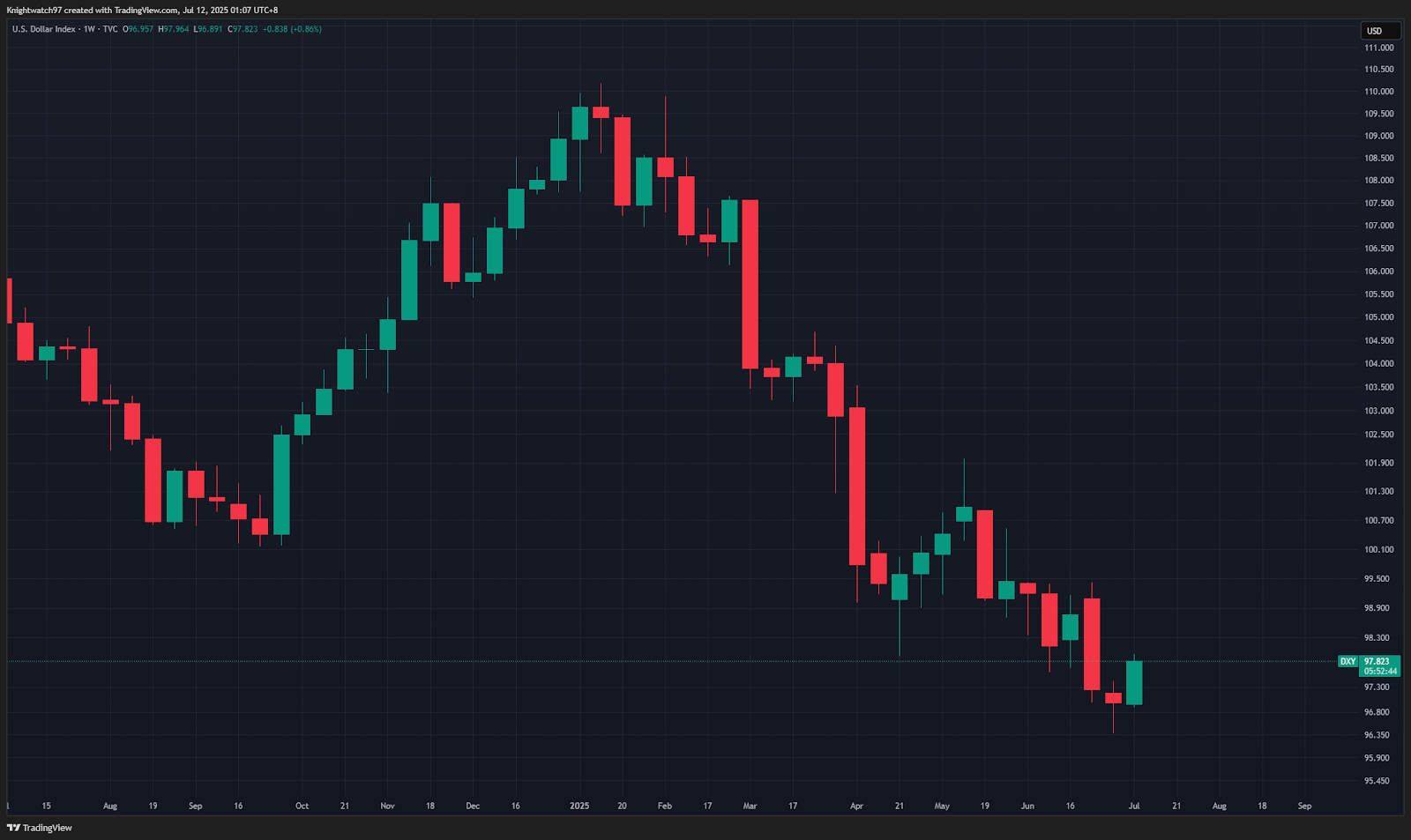
This phenomenon reveals a deeper trend: the second quarter of 2025 may mark the beginning of a "great decoupling." In this decoupling, the internal structural catalysts driving Bitcoin (such as the aforementioned regulatory clarity and institutional adoption) began to outweigh the external macroeconomic headwinds for the first time. The market's pricing of crypto-native driving factors has surpassed its reaction to short-term macro noise. This itself is an important sign of market maturation. The weakness of the macro economy provides a real problem context for the narrative of "Bitcoin as a solution," greatly accelerating its acceptance as a legitimate macro hedge asset. Institutional leaders like Larry Fink began to frequently define Bitcoin in mainstream financial media as an "international asset" capable of hedging geopolitical risks and sovereign currency depreciation. This endorsement from the head of the world's largest asset management company carries weight far beyond that of internal crypto evangelists.
Institutional Gates Open: From ETF Highways to Corporate Treasuries
If regulatory thawing is the "timing," and macro turmoil is the "geography," then the sprinting entry of institutions and enterprises is the decisive "human factor." In the second quarter, we clearly saw institutional capital flowing into Bitcoin through two main channels: the already established ETF pathway and the explosive growth of corporate treasury waves.
The U.S. spot Bitcoin ETF continued its historic success in the second quarter. Data shows that in just one week in April, these ETFs attracted over $3 billion in net inflows. By early July, the total assets under management (AUM) of all Bitcoin ETFs had reached $137.46 billion. Among them, BlackRock's IBIT was referred to by its CEO Larry Fink as "the fastest-growing product in ETF history," having attracted nearly $1 billion in a single day. Fink expressed his surprise at the scale of demand, believing it far exceeded expectations. The success of the ETF lies not only in its capital-raising ability but also in its complete transformation of Bitcoin's investor structure. The market, once dominated by retail and crypto funds, has now welcomed indirect participation from sovereign wealth funds, pension funds, and large corporate consortiums.
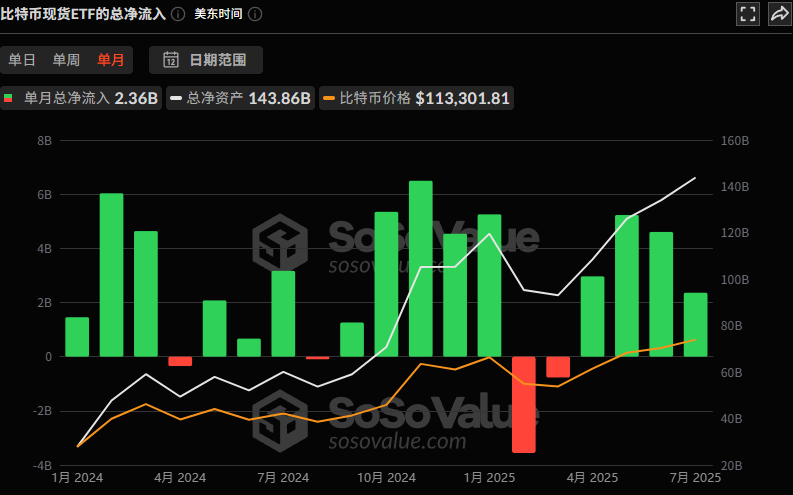
A more profound structural change than the ETF is the rise of the "Corporatization of Bitcoin." An increasing number of publicly listed companies no longer view Bitcoin merely as a speculative asset but as a core inventory reserve asset. Data shows that in the second quarter of 2025 alone, global listed companies increased their holdings by approximately 131,000 Bitcoins, raising their total holdings by 18%. As of July 4, corporate treasuries held a total of 944,109.2 Bitcoins. This movement is no longer a solo act by MicroStrategy but has evolved into a global, cross-industry corporate finance revolution. The entry of Japanese listed company Metaplanet is particularly representative, as the company explicitly stated that it purchased Bitcoin to hedge against the long-term depreciation risk of the yen, opening a new paradigm of "Bitcoin as a national currency hedging tool."
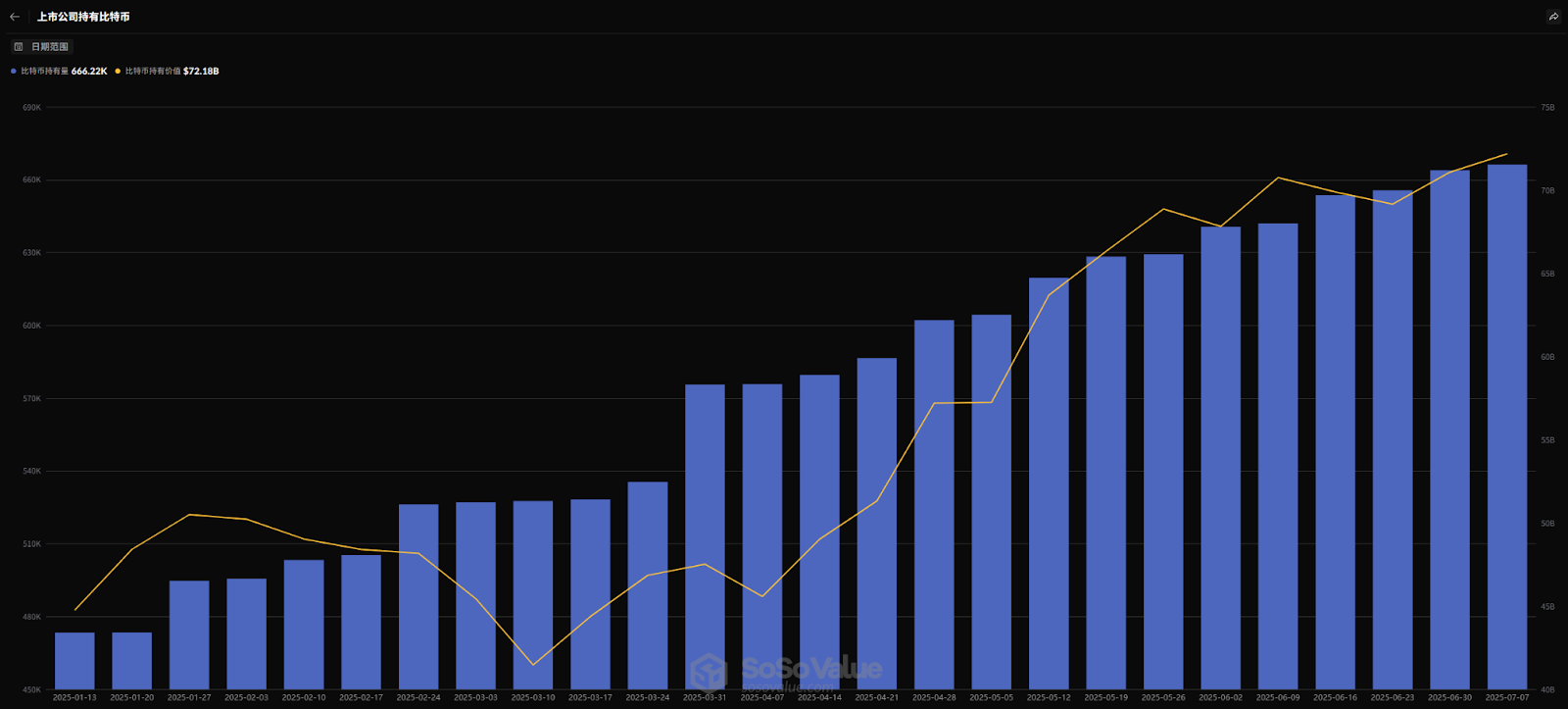
Behind this trend is a deeper adoption logic. ETFs are a "touch" tool, while treating Bitcoin as a company's primary inventory reserve asset is a core "integration" strategy. It signifies that company management believes in Bitcoin as a long-term store of value, even considering it superior to cash. The new rules implemented by the Financial Accounting Standards Board (FASB) at the end of 2024 allow companies to measure their held crypto assets at fair value, greatly improving the presentation of financial statements and clearing technical barriers for more CFOs to include Bitcoin on their balance sheets. A new "Bitcoin treasury company" sector is forming, providing traditional equity investors with a way to gain leveraged exposure to Bitcoin through the stock market, thereby embedding Bitcoin deeper into the traditional financial system.
Echoes on the Blockchain: On-Chain Data Validating Institutional Beliefs
If regulation and institutional dynamics are the "narratives" of the market, then on-chain data serves as the "facts" that validate these narratives. The on-chain indicators of the second quarter of 2025 clearly depict a landscape of accumulation led by institutions and based on long-term beliefs.
First, amidst market volatility, capital exhibited classic "flight to quality" characteristics. The Bitcoin dominance index soared to 63%, reaching a new high since early 2021. Meanwhile, the total market capitalization of cryptocurrencies, excluding Bitcoin, plummeted significantly. This sharp divergence indicates that, in the face of uncertainty, capital rapidly concentrated on the most liquid and institutionally recognized asset—Bitcoin. This aligns perfectly with the behavior pattern of institutional investors, who prioritize securing core asset allocations during times of risk.
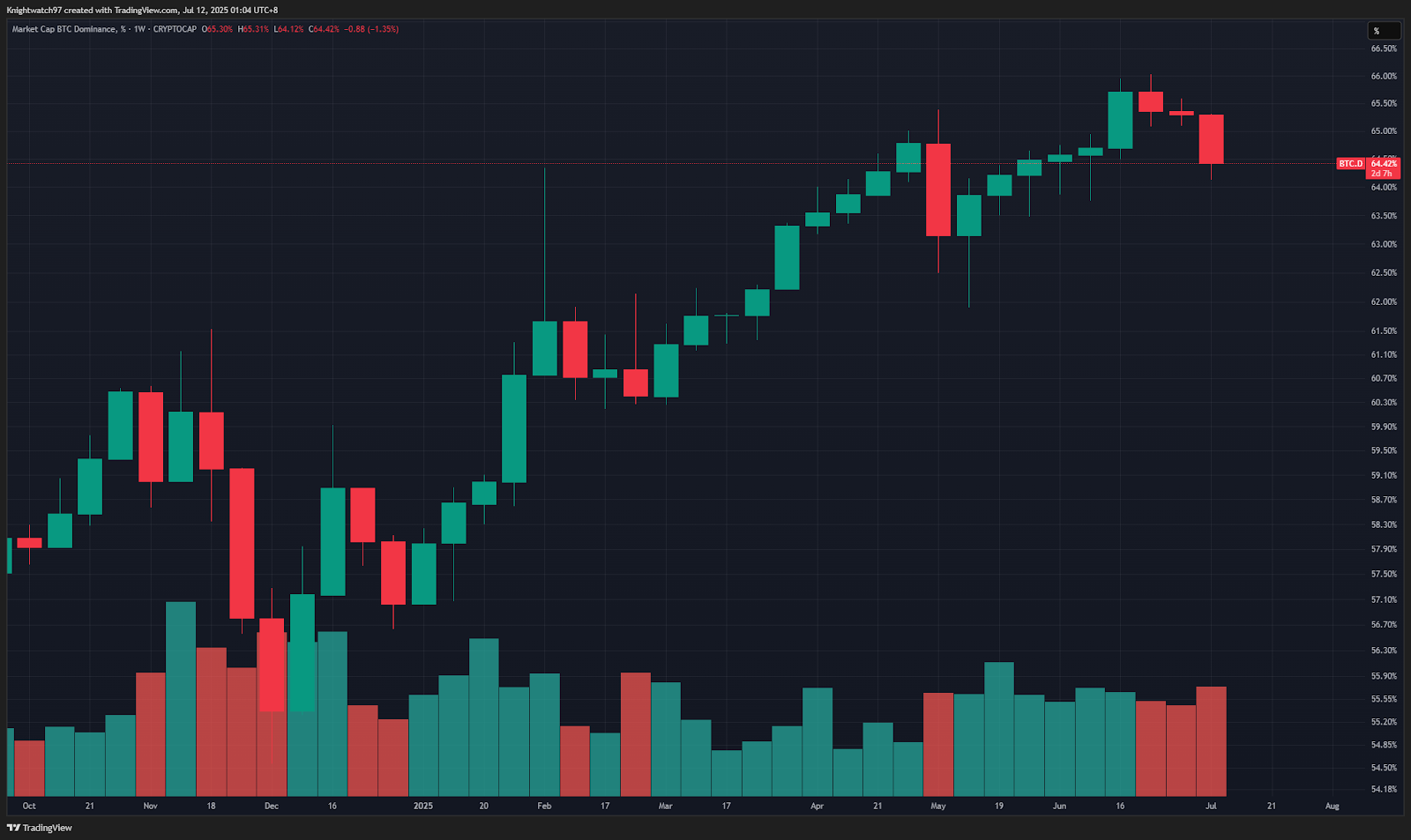
Second, key "Long-Term Holder" (LTH) indicators showed steadfast accumulation behavior. Despite significant price fluctuations, the supply of Bitcoin held by LTHs increased by 600,000 coins in the second quarter. A joint report by Coinbase and Glassnode confirmed that "long-term holders are accumulating again." These Bitcoins were transferred to addresses statistically unlikely to spend, consistent with the behavior pattern of institutions and enterprises establishing long-term strategic positions. More importantly, we observed a steady rise in realized market capitalization, indicating that new capital is entering at higher cost levels, solidifying the price foundation of the market.
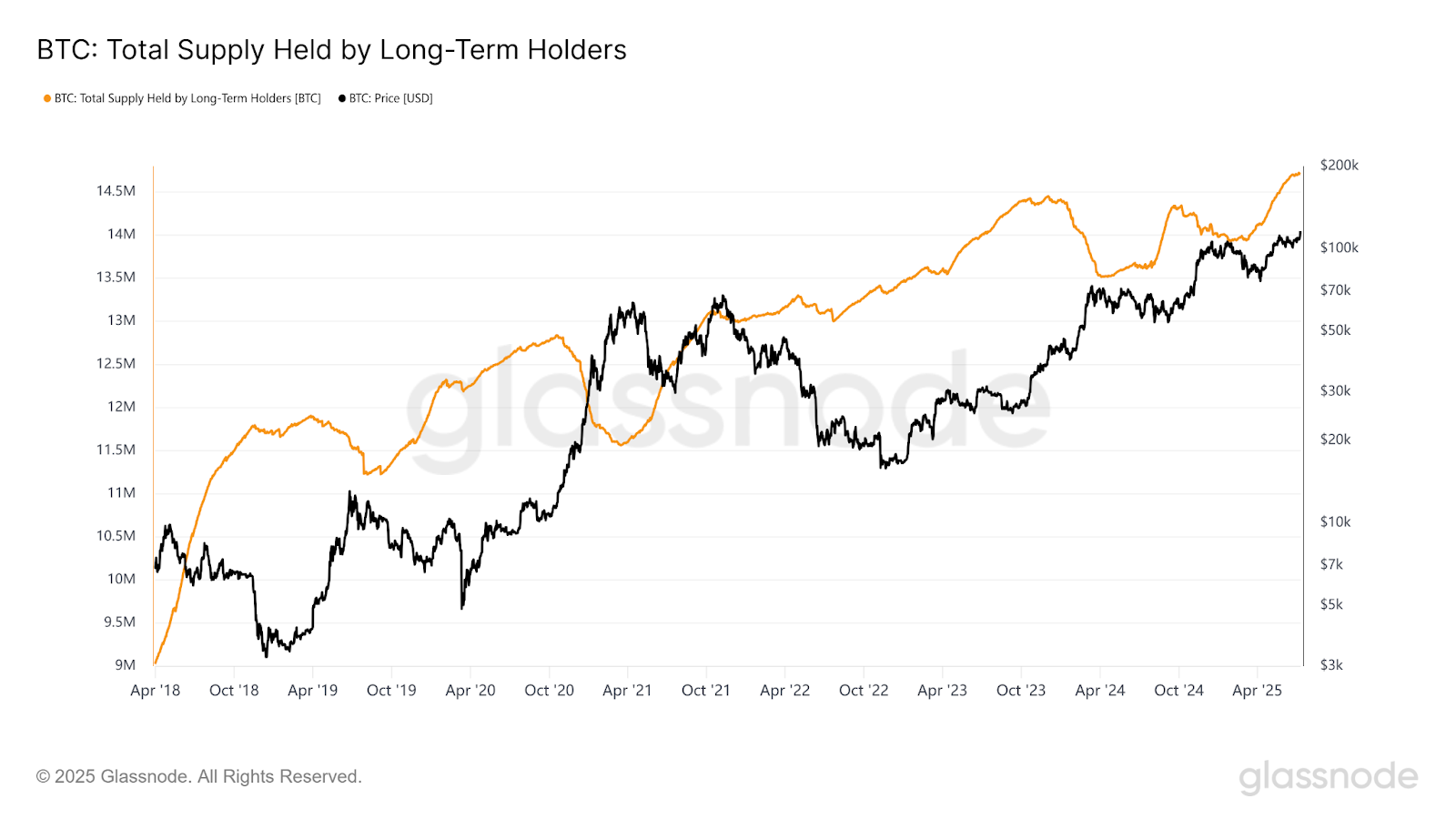
Furthermore, the Bitcoin balance on exchanges continued to decline, which is a strong bullish signal. When investors intend to hold long-term, they tend to withdraw assets from exchanges to self-custody wallets or institutional-grade custody solutions. The reduction in liquidity available for immediate sale on exchanges, against the backdrop of enormous demand from ETFs and corporate treasuries, directly exacerbated the supply-demand imbalance in the market. Statistics show that the number of Bitcoins absorbed by ETFs daily once exceeded 10 times the daily output from miners, and this structural supply-demand imbalance is the fundamental driving force behind price increases.
Finally, the number of "whale" addresses holding over $1 million in Bitcoin increased from approximately 124,000 in mid-March to over 160,000 in June. This significant rise in large addresses serves as strong corroboration of institutional and high-net-worth individual entry. These on-chain data points collectively form the "behavioral fingerprint" of institutional capital, contrasting sharply with the characteristics commonly seen in retail-led cycles, such as surges in exchange inflows and increases in short-term holder supply, clearly revealing a fundamental change in the behavior patterns of market participants. A new cycle of Bitcoin, led by institutions and centered on value storage, is leaving its solid footprint on the blockchain.
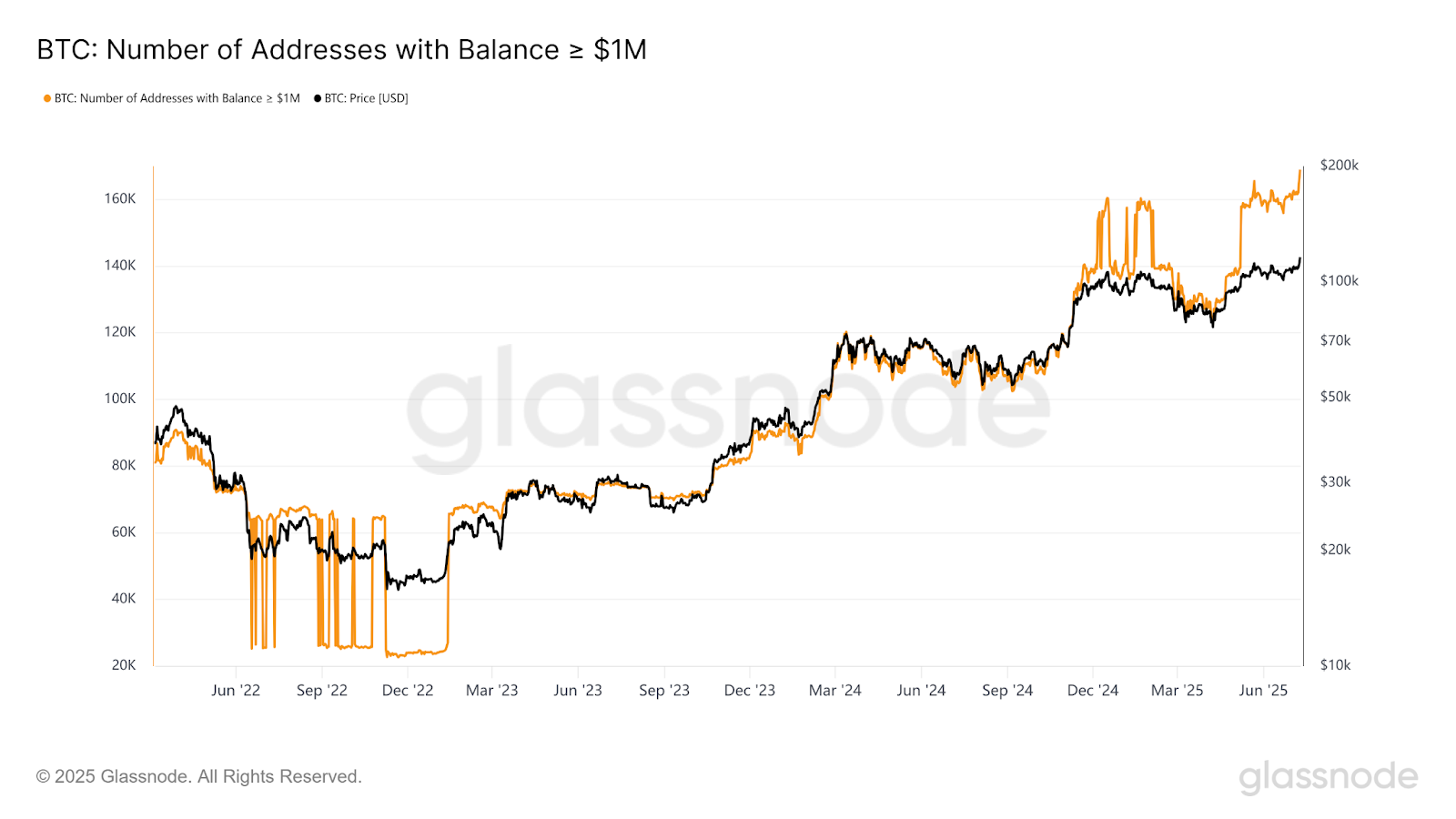
SEC New Policy: From "Innovation Exemption" to "On-Chain Finance," the Summer of DeFi May Reappear
Overall Progress in the Sector and Regulatory Turnaround
In the first half of 2025, the DeFi sector witnessed a key regulatory breakthrough. On June 9, the U.S. SEC proposed an "Innovation Exemption" framework, clearly supporting the non-intermediary characteristics of blockchain technology and emphasizing that developers should not bear securities law liability for releasing code.
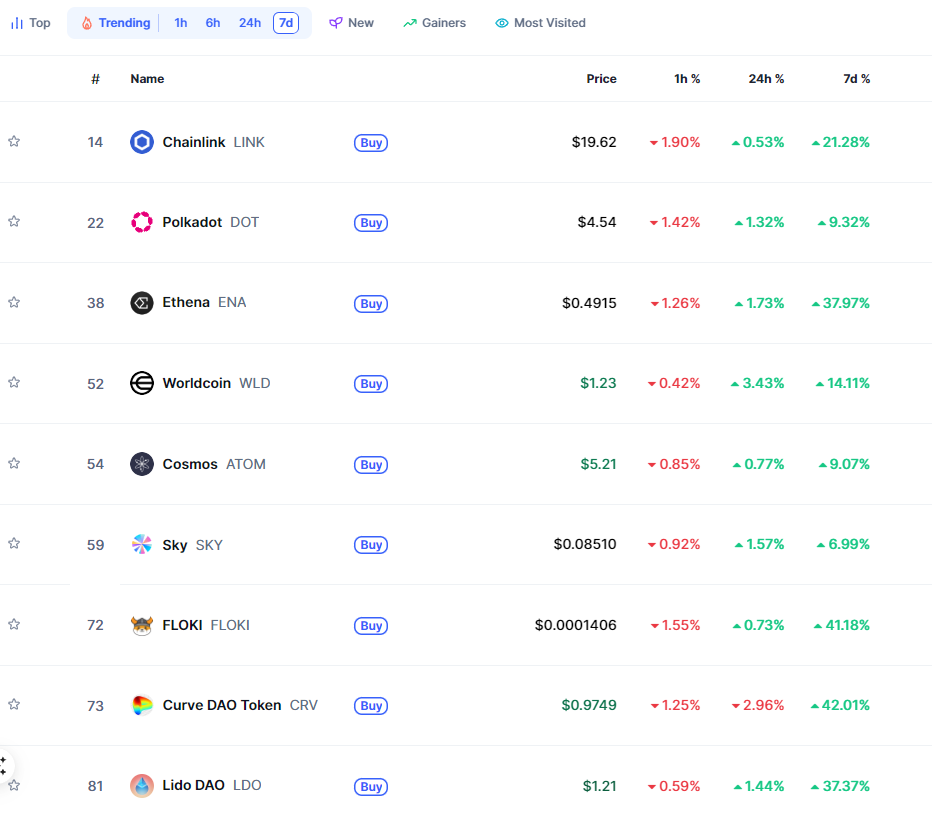
This policy shift significantly alleviated regulatory uncertainty, leading to a 20%-40% surge in DeFi tokens, seen as the starting point for the institutional reconstruction of the industry.
Total TVL Steady with an Upward Trend
Overall TVL: Affected by the Trump tariff policy at the beginning of the year, DeFi TVL dropped from $129 billion at the start of the year to $83.6 billion in April, but rebounded as the market warmed up from April onwards.
AAVE Lending Volume Hits New Highs, Growth Driven by Scale and Synergy
AAVE has built a strong network effect barrier in the DeFi space. Leveraging five years of market cultivation, a massive user base, and top-tier industry liquidity, projects developed on AAVE naturally enjoy an irreplicable scale advantage.
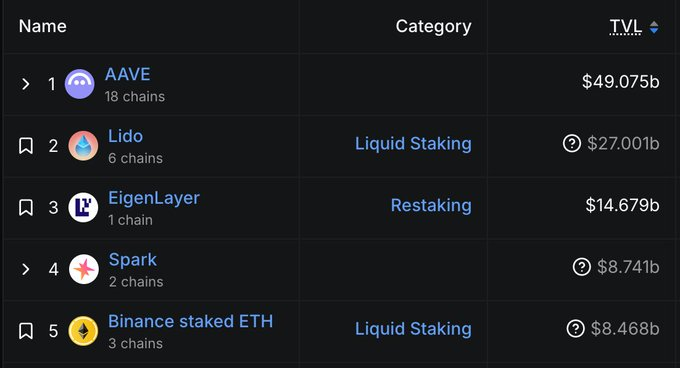
Partners can quickly access ready-made ecological resources—powerful infrastructure, an active user community, and deep liquidity pools—eliminating the lengthy foundational construction period, which exemplifies the "AAVE effect."
As the largest protocol in DeFi history by TVL, AAVE dominates with a 21% share of the entire industry's TVL and an overwhelming 51% share of the lending market. Its $49 billion in net deposit size forms the cornerstone of system stability, with its core advantage being its unique capital hub role, effectively catalyzing ecological synergy and achieving geometric growth in liquidity:
Examples Confirming Significant Synergy:
- Ethena's sUSDe saw deposits surge 55 times within just two months after integrating with AAVE, jumping from $2 million to $1.1 billion.
- After receiving AAVE support for several weeks, Pendle assets attracted user deposits worth $1 billion in PT tokens, which has now doubled to $2 billion, making AAVE the primary supply market for Pendle tokens.
- KelpDAO's TVL grew nearly fourfold within four months after integrating the AAVE protocol with rsETH, soaring from 65,000 ETH to 255,000 ETH.
Additionally, AAVE supports nearly half of the active stablecoin market and has become the primary hub for circulating Bitcoin in the DeFi space. Notably, it has achieved nearly $1 billion in TVL across four independent blockchain networks, showcasing a rare depth and breadth of layout.
The first half of 2025 marks a turning point for DeFi as it transitions from a regulatory winter to institutionalization. AAVE has solidified its "lending hegemony" through liquidity depth, demand creation capabilities, and multi-chain expansion, but its token has yet to fully reflect its value; meanwhile, the capital inflow and innovation loosening triggered by the SEC's new policy are driving DeFi into the "final battle" of integration with traditional finance.
Overview of Cryptocurrency Public Chains in the First Half of 2025: Breakthroughs and Evolution of Ethereum, Solana, BNB Chain, and Hyperliquid
1. Ethereum: ETF Funds Provide Support, Technical Upgrades Reshape Ecological Moat
Token Price: Deep V Rebound Validates Institutional Confidence
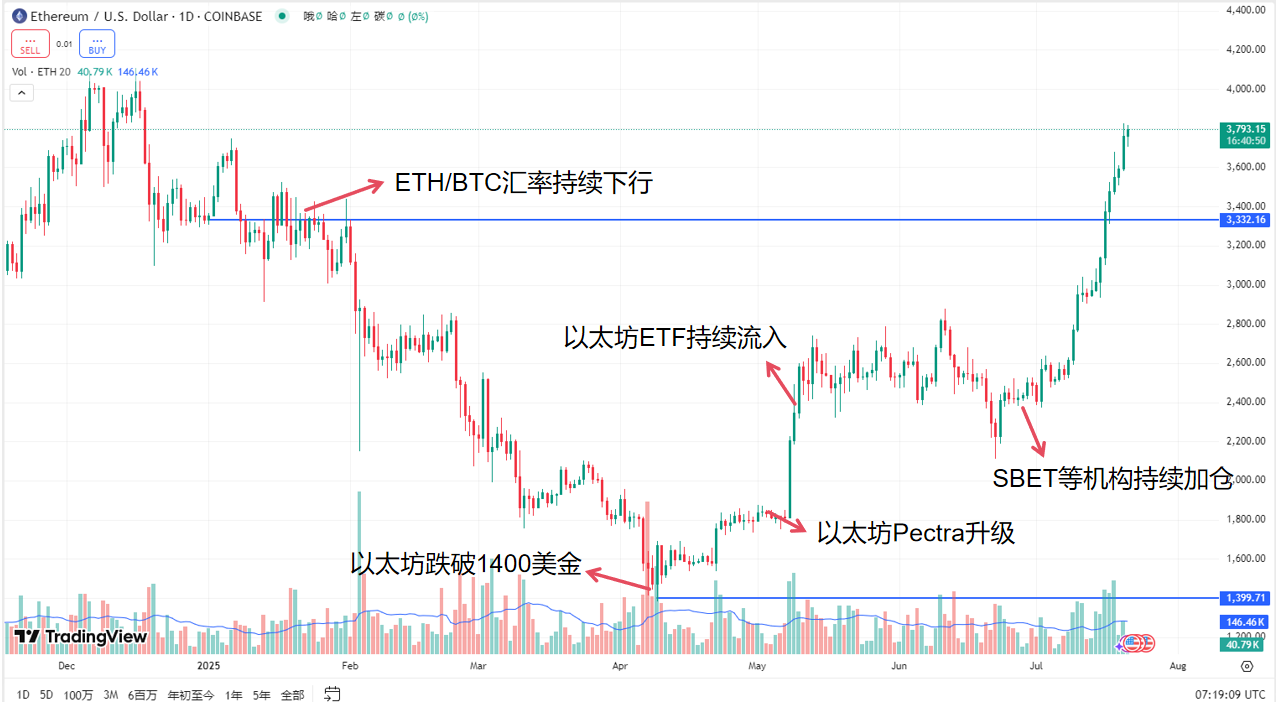
At the beginning of 2025, Ethereum started at a high of $3,700, but due to macro inflation stickiness, Trump administration tariff policies, and market liquidity contraction, it plummeted to a year-low of $1,385 in April. The turning point began with the implementation of the Pectra upgrade in May: this upgrade raised the single-node staking limit from 32 ETH to 2,048 ETH and introduced account abstraction (EIP-7702 standard), significantly enhancing network efficiency and user experience, driving ETH to surge 40% within 72 hours.
Subsequently, with the continued inflow of U.S. Ethereum ETFs, companies listed on U.S. stock exchanges like SBET and BMNR strategically reserved ETH, and related bills such as the "GENIUS Stablecoin Act" and the "Digital Asset Market Clarity Act" were passed, leading to a continuous influx of institutional funds into Ethereum.
As of July 20, ETH broke through $3,800, setting a new high for the year, with an increase of over 20% year-to-date. Spot ETFs saw net inflows for two consecutive months, accumulating a total scale of $13.7 billion, with BlackRock's IBIT product holding over 40% of the total.
Ecological Evolution: From DeFi Hegemony to Diversified Expansion into RWA and L2
Despite facing competition from public chains like Solana, Ethereum's dominance in the DeFi space remains unshaken—total locked value (TVL) reached $103.3 billion, with private credit-driven RWA (real-world assets) on-chainization becoming a new growth pole, surpassing $24.4 billion.
Layer 2 solutions have become the core vehicle for expansion: Arbitrum, Optimism, and others handle 90% of the network's transactions, facilitating the launch of institutional-level applications like JPMD, a deposit token from Morgan Stanley on the Base chain.
Moreover, the Ethereum ecosystem is extending into AI and compliance: Consensys is collaborating with Microsoft to develop an enterprise-level smart contract platform, while the implementation of MiCA regulations in the EU further strengthens the penetration of compliant stablecoins like USDC, injecting long-term stability into the ecosystem.
2. Solana: Ecological Explosion Amid Speed Revolution and MEME Craze
Token Price: Geopolitical Catalysts Drive Volatility, Technical Advantages Support Rebound
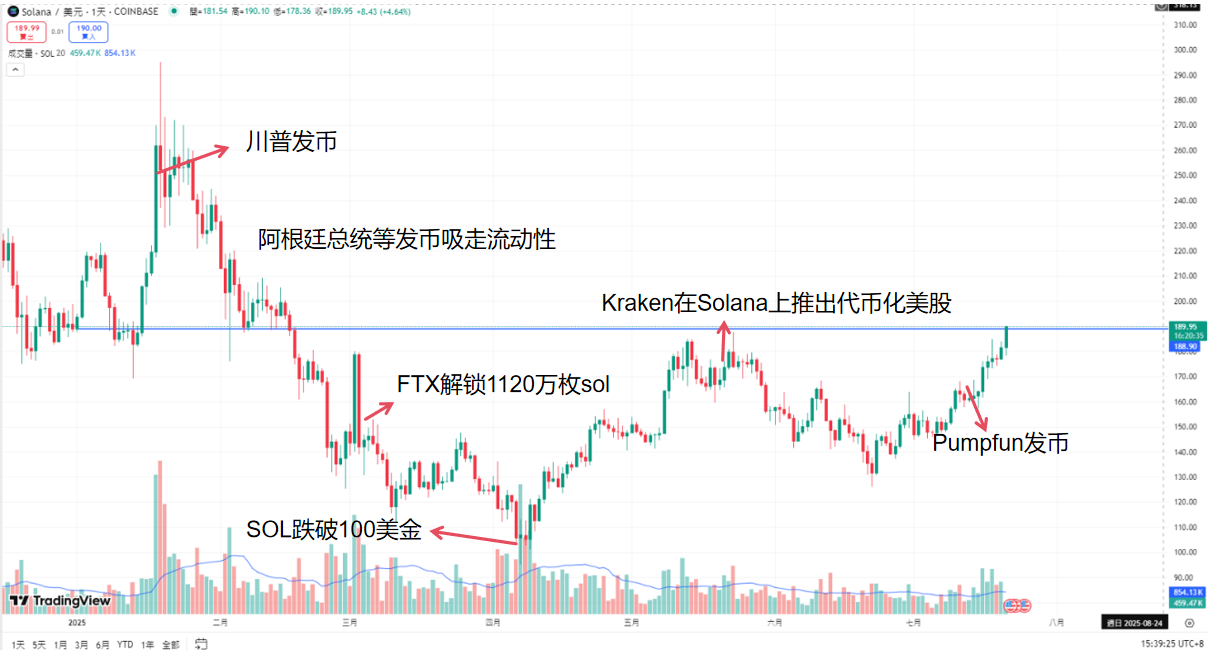
The early 2025 incident of Trump issuing the "TRUMP" token ignited the Solana ecosystem while absorbing a large amount of liquidity, causing SOL to soar to a historical high of $295 in January before quickly falling. In April, impacted by macro headwinds, the price dropped below $100.
Subsequently, leveraging its underlying performance advantages and deepening strategic partnerships, SOL began a volatile rebound: in May, PayPal integrated the Solana payment system, and Visa expanded its stablecoin settlement pilot, pushing the price back up to $190 (as of July 20), nearly a 90% increase from its low.
The market shows significant valuation discrepancies—21Shares provides a fair range of $520 to $1,800 based on discounted cash flow models, implying extreme expectations for on-chain transaction volume growth.
Ecological Evolution: From "Nasdaq-Level" Trading Platform to AI Agent Testing Ground
Solana reconstructs the public chain competition paradigm with speed and cost: a block time of 0.44 seconds, transaction fees of $0.00025, and a performance of 65,000 TPS, allowing it to dominate retail payments and high-frequency trading scenarios.
In January and February 2025, on-chain transaction volume reached $364.3 billion, surpassing Coinbase and Ethereum, approaching 50% of Nasdaq's scale during the same period. The ecological explosion is driven by three major engines:
- MEME Coin Infrastructure: The Pump.fun platform accumulated over $575 million in fee revenue, becoming the core entry point for retail speculation;
- Enterprise-Level Payment Network: The integration of PayPal, Stripe, and Shopify positions Solana as the "next-generation Visa";
- AI Agent Explosion: The surge in DePIN and AI agent projects led to the on-chain stablecoin market cap exceeding $10.9 billion, growing 600% in six months.
- The number of developers increased by 83% year-on-year, surpassing Ethereum for the first time, and the Firedancer upgrade plan may push TPS to the million level, further solidifying technical barriers.
3. BNB Chain: Value Resilience Under Ecological Diversification and CZ's Influence
Token Price: Value Reassessment Under Regulatory Pressure
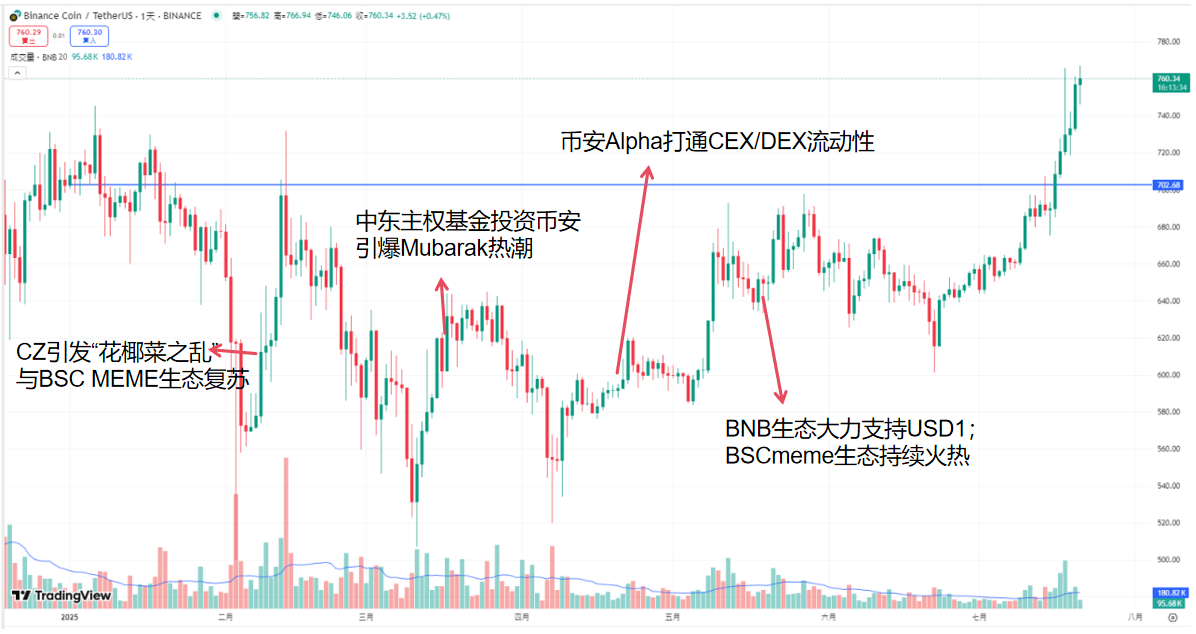
BNB fell from a high of $740 at the beginning of the year, reaching a low of $500 in April.
Subsequently, the ecological self-healing ability became evident: CZ continuously promoted industry compliance initiatives on Twitter, building the BSC ecosystem and boosting market confidence; the memecoin craze and RWA projects flowed into BSC, stimulating BNB to rebound to $766 in July, nearing its historical peak.
4. Hyperliquid: The Upsurge Logic of a Decentralized Derivatives Dark Horse
Token Price: Value Discovery Under Whale Support and Deflationary Model
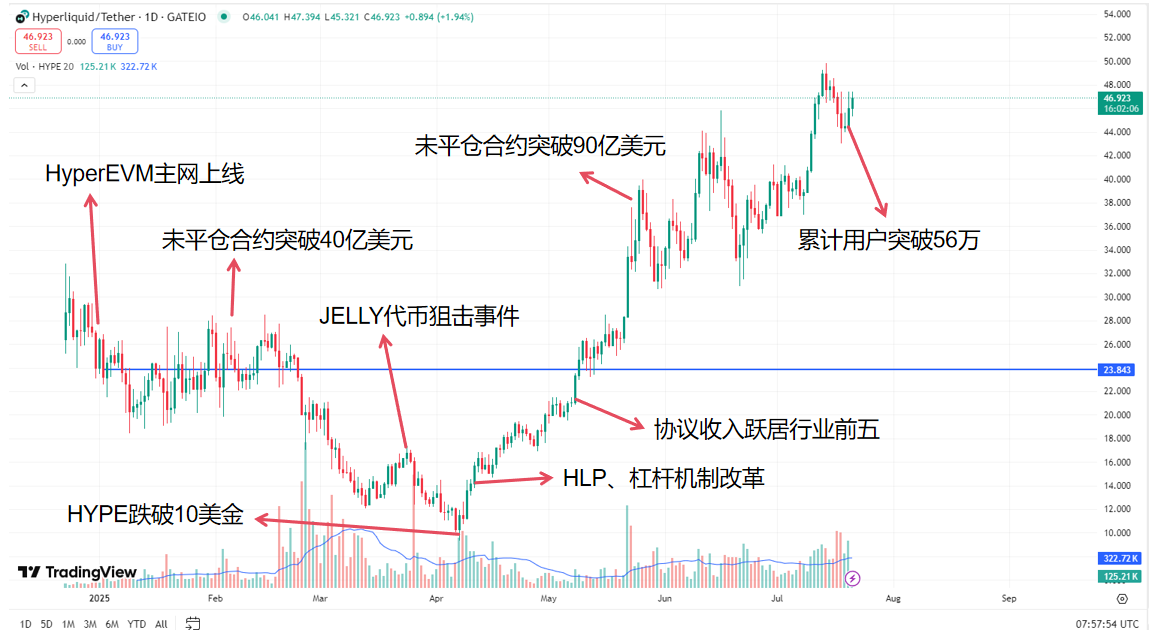
The HYPE token began its downward trajectory at $28 at the start of the year, dropping below $10 in April due to the "Jelly Incident" that led to an attack on the HLP fund. Subsequently, it made a comeback thanks to the fee buyback mechanism and a surge in trading volume: the platform's daily trading volume exceeded $15 billion, with 50% of daily fee revenue used to burn HYPE, pushing the token to a high of $49.8 on July 20, a staggering 398% increase from its low.
On-chain data shows that whale addresses like James Foye continue to accumulate, holding over 15% of the total, forming a liquidity moat.
Ecological Evolution: From Derivatives Island to Full-Chain Application Ecosystem
Hyperliquid stands as an institutional-grade derivatives protocol, achieving three major leaps in 2025:
- Product Matrix Expansion: The leverage for perpetual contracts increased to 50 times, with new forex and commodity derivatives attracting hedge funds;
- Chain Abstraction Architecture: By utilizing account abstraction, it enables cross-chain trading of Ethereum and Solana assets, reducing friction in multi-chain operations;
- Ecological Incubation Plan: The Hyperliquid Foundation invested $20 million to support Perp DEX, options protocols, and RWA projects;
- The first lending protocol, Lendify, raised over $48 million in its TGE.
- The average daily unique trading addresses exceeded 120,000, proving its transformation from a "niche protocol" to a core layer of derivatives infrastructure.
Final Chapter: Public Chain Competition Enters the "Multidimensional War" Era
The public chain landscape in the first half of 2025 reveals a harsh truth: single-point advantages are insufficient for victory. Ethereum maintains its base with ETFs and L2 ecosystems, Solana breaks through with speed and payment scenarios, BNB Chain is reborn through traffic operation and compliance transformation, while Hyperliquid makes a comeback with a deflationary model in a vertical field.
Core trends have emerged:
- RWA and Stablecoins have become new traffic entry points, with U.S. Bank and Citigroup announcing plans to issue self-operated stablecoins;
- Regulatory Arbitrage Ends—The U.S. "GENIUS Act" and the EU MiCA force public chains to build compliance frameworks;
- Token Economic Innovation: Shifting from PoS staking rewards to fee burning (like HYPE), ecological incentive dividends, and other pragmatic models.
As the market cap of altcoins surpasses $1.5 trillion, the rise of competitive coins has recently outperformed BTC, indicating that the endgame of public chain wars is no longer about "killer applications," but rather the antifragility of ecosystems and institutional design.
In the second half of 2025, Solana's Firedancer upgrade, Ethereum's Verkle tree integration, and Hyperliquid's cross-chain derivatives will push the battle into new dimensions.
Conclusion
As human civilization transitions from the roar of steam to the flow of digital currency, history often repeats similar scripts: every technological frontier expansion is accompanied by the upheaval of old orders and the coronation of new rules.
The first half of 2025 in the crypto market marks the climax of this power transfer—Washington's regulatory iron curtain has dramatically thawed amid lobbying torrents, the Federal Reserve's interest rate scepter has dimmed under the shadow of stagflation, and the blockchain, roaring with Bitcoin mining, has already built a new continent in the digital age.
At this moment, we stand at the fissure between two eras: in the cracks of old finance, corporate treasury Bitcoin reserves stack up like Fort Knox, while the capital flood from ETFs has breached the last arrogant walls of Wall Street; on the new world's map, stablecoin legislation becomes the constitution for cross-border payments, DeFi's smart contracts rewrite profit distribution rules, and the computational race of public chains ignites an on-chain industrial revolution for AI and RWA.
And all of this is just the prologue.
免责声明:本文章仅代表作者个人观点,不代表本平台的立场和观点。本文章仅供信息分享,不构成对任何人的任何投资建议。用户与作者之间的任何争议,与本平台无关。如网页中刊载的文章或图片涉及侵权,请提供相关的权利证明和身份证明发送邮件到support@aicoin.com,本平台相关工作人员将会进行核查。





